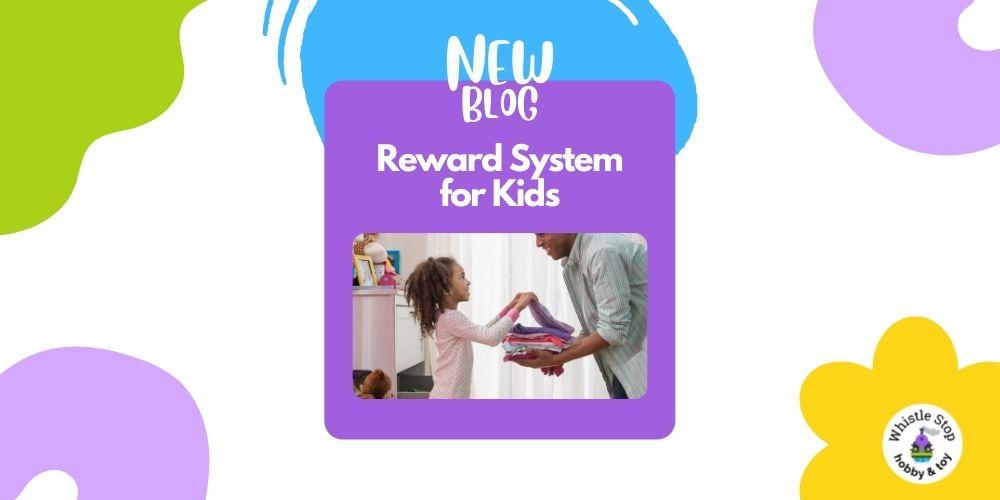Reward systems use positive reinforcement to encourage good behavior. If you want to help your kids build the right behavioral habits and reduce tantrums at the same time, you can try this parent-approved life hack; reward systems. They encourage behavioral modification through positive reinforcement. Here's how to set up a reward system that works for toddlers, preschoolers, and school-aged kids.
As we jump into the school year, a struggle many parents will have is getting the kids up and ready for school on time. Instead of focusing on the negativity of the kids dragging their feet, a reward system creates positive behavior reinforcement. This is great to help get the kids dressed by a certain time, brushing their teeth, or finish eating breakfast.
Creating Reward Systems for Toddlers and Preschoolers
For little kids, try using a sticker reward chart. It is simple to start; put one sticker on the chart each time your child completes a goal. Some parents like to give additional milestone rewards. As an example, each time your kid brushes their teeth by a certain time, they get to put a sticker on the board, but after 10 stickers they get a small toy or new book! Whistle Stop Hobby & Toy has tons of toys and books that work perfectly for a small reward. Reward charts can be found online to print or you can have fun making a DIY chart and personalizing it.
To start, only track and reward one behavior at a time. A preschooler or toddler might get stickers for using the toilet, getting dressed, saying “thank you”, or not whining. After one behavior is no longer an issue, you can move on to the next. The key here is to make the goals realistic, age-appropriate, and allow for regular praise.
Reward Right Away
To create the most impact on your child, it is often recommended to reward preschoolers and toddlers right away. Stickers should be given immediately after the desired behavior to eliminate any confusion. This helps increase the impact of the reward.
When rewarding your kids, it is important to give plenty of praise. While it may not always seem like it, toddlers and preschoolers love pleasing their parents and getting approval. Giving your child lots of praise when they accomplish a goal is a great way to encourage the behavior to continue. Reminding your kids of the reward chart often can help motivate them to reach those goals.
Create Rules For The Reward System
Especially when using a reward system with toddlers and preschoolers, keeping the wording and rules simple is crucial. Ues easy to understand terms. Instead of rewarding for “being polite to others”, reward your child for saying “please” and “thank you” to people.
Another key to success when creating a reward system is to avoid using it as a bribe for your kids. This is a difficult pitfall to avoid because even when you’re desperate to get your child to behave in public, you shouldn’t use the reward system as a bribe. While it seems like an easy solution at the time, bribing your kids with the reward system could encourage them to start acting out more often, knowing a reward awaits them when they stop. There is a fine line between gentle reminders to help nudge a specific, good behavior along and using it as a bribe in a tough situation.
Reward Systems for Kids
Once your kid is past the toddler or preschool age, you can change up the reward system so it fits their age better. For school-aged kids, a reward system will usually rely on points instead of stickers. Additionally, points alone won’t motivate them to change their behavior. Instead, offer incentives to trade points for things like a later bedtime, or an extra hour of screen time, or trips to the playground. Some parents start using small amounts of money for points so their kids could buy small toys, books, or treats for themselves. Or if they delay the gratification of a smaller new toy, they could save up for something bigger.
Rules For School Aged Kids’ Reward Systems
As your kids age, you can now implement more items on the reward chart. Depending on how your child is progressing, you should be able to track multiple behaviors to reward. For school-aged children, some examples of this might include making their bed, controlling their anger, helping with chores, and being nice to siblings.
Another element to add at this age is time sensitivity. Limiting the time your child can earn points for making their bed before 10 am helps teach deadlines and removes any rewards for procrastination.
Additionally, at this age, some parents will decide to remove points for bad behavior. Each parent should consider what is best for their child, but once the rules are set, make them clear to your child. Explain the rules ahead of time, and when points are removed, explain clearly to your kid why they are being removed.
No matter the reward system you put in place for your child, it is important to set clear rules, communicate the rules clearly to your child, and stick to those rules. It can be a lot of work to maintain reward charts for long periods, but over time, as long as the rules are clearly set and you follow these best practices, you will see the goal behaviors from your child.

